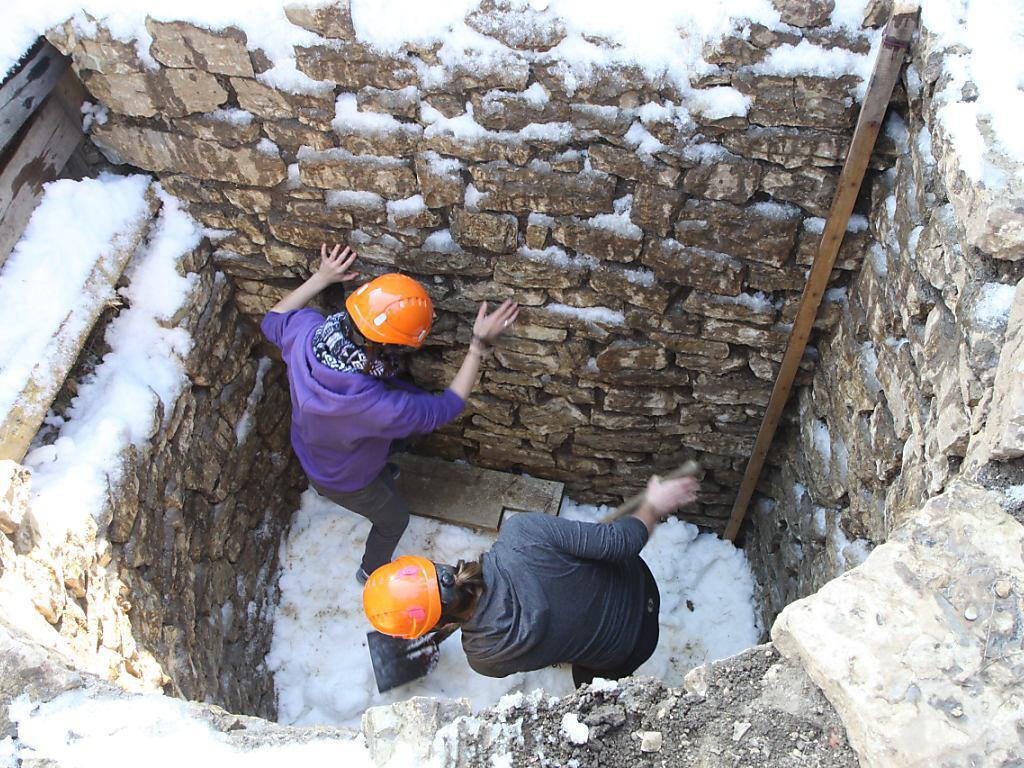
Basel scientists attempt to recreate Roman fridge

What’s the secret behind a shaft found during excavations in Kaiseraugst in northern Switzerland? Researchers from the University of Basel are filling it with snow and testing whether the Romans could have used it as a fridge.
Kaiseraugst, in canton Aargau, is home to ruins of the Ancient Roman city of Augusta RauricaExternal link. The Romans are known to have used such holes to store fruit, vegetables, oysters, cheese and other products that go off. In winter, they would fill them with snow and ice and cover them with straw.
This is the third fridge-building attempt by archaeologist Peter-Andrew Schwarz and his team. This time they are using the method of the “nevatersExternal link” (ice makers) from Majorca.
“We’ll add 20-30 centimetres of snow, pack it tightly and cover it with straw, before adding the next layer,” Schwarz told the Swiss News Agency.
The experiment, which is set to run until Friday and can be viewed by the public, is not actual proof that the shafts were used as fridges, but Schwarz said he wanted to show that it was possible in principle. The analysis of the third attempt is expected in August.

In compliance with the JTI standards
More: SWI swissinfo.ch certified by the Journalism Trust Initiative
















![The four-metre-long painting "Sonntag der Bergbauern" [Sunday of the Mountain Farmers, 1923-24/26] had to be removed by a crane from the German Chancellery in Berlin for the exhibition in Bern.](https://www.swissinfo.ch/content/wp-content/uploads/sites/13/2025/12/01_Pressebild_KirchnerxKirchner.jpg?ver=a45b19f3)













You can find an overview of ongoing debates with our journalists here . Please join us!
If you want to start a conversation about a topic raised in this article or want to report factual errors, email us at english@swissinfo.ch.